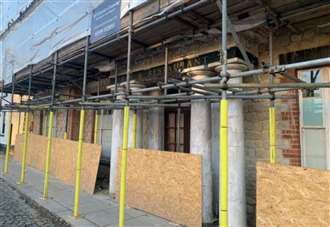A new name for a Grade II-listed building could be reconsidered following a campaign to protect its historic identity.
The Royal Oak Hotel, located in Sevenoaks High Street, was recently converted into six flats and a townhouse and renamed Hanover House by the local authority.

The change followed the sale of the 300-year-old property for £1.25 million in October 2023, and a planning application to turn it into housing.
Planning permission was granted in July 2024, and in March this year the council confirmed the new names: Hanover House for the main building and Dolling House for the adjoining townhouse.
The decision triggered a strong response from local residents and town councillors, who objected to losing a name with such historic significance.
They argued that nearby buildings, like Royal Oak Mews, were named in reference to the original hotel, not the other way around.
Concerns were also raised about the lack of public consultation and the wider impact on the town’s heritage.
Now, after months of lobbying by town and district councillors, members of the Sevenoaks Society and local residents, there are signs of a possible compromise.

At a meeting of the town council’s planning and environment committee on Monday night (July 28), councillors were told that officers from Sevenoaks District Council had informally agreed to support an alternative name: The Old Royal Oak.
While not identical to the original, the new name keeps the historic connection and avoids confusion with nearby properties, one of the reasons the original name was rejected.
The suggestion was put forward by district councillor Avril Purves and supported by town mayor Tony Clayton on July 16.
The town council said it is cautiously optimistic but is still waiting for the developer to submit a formal application and for the new name to be officially approved.
The Royal Oak Hotel has long been considered a landmark in Sevenoaks.

Believed to have hosted Queen Victoria during a visit to Knole, it once operated as a coaching inn and local meeting place.
Built from coursed local stone with red brick corners and a slate roof, the building features a symmetrical Georgian façade with sash windows and a central porch supported by Doric columns.
